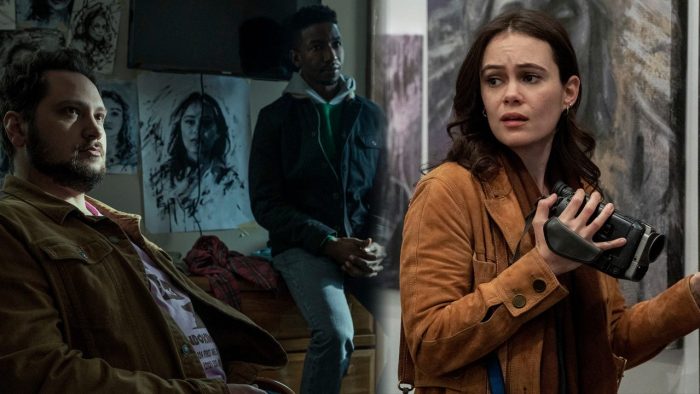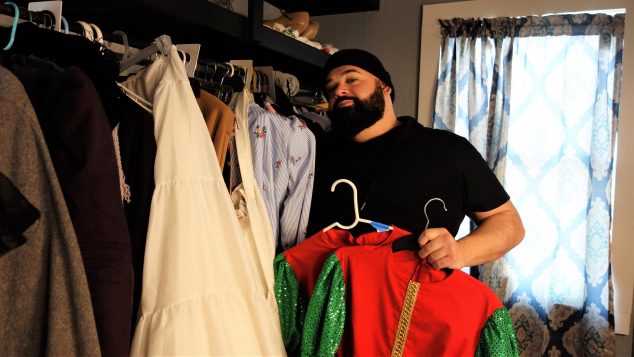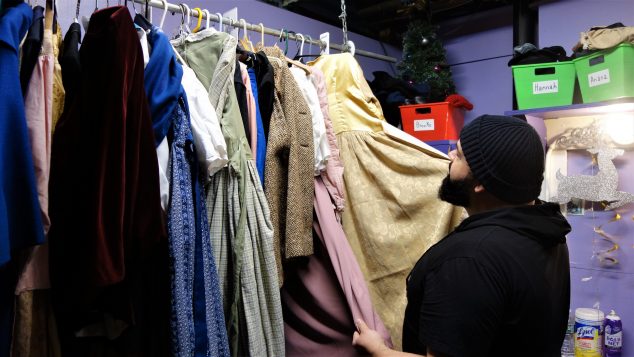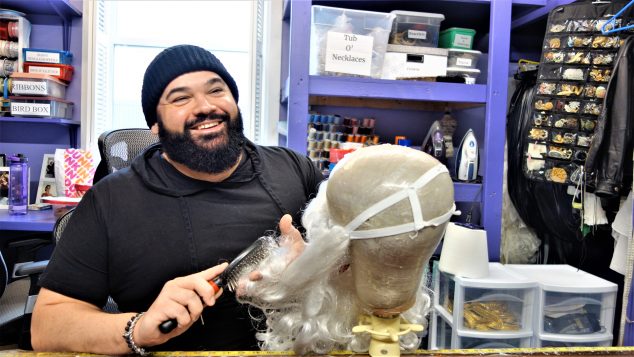By Jeffrey Sanzel
One of Netflix’s top ten most popular shows is the first season of the supernatural Archive 81. The twisty thriller runs parallel timelines that eventually entangle. Smart and well-plotted, the eight one-hour episodes deliver intriguing concepts in a literate, engaging storyline.
Based on the podcast of the same name, Archive 81 focuses on Daniel Turner (Mamoudou Athie, understated and riveting), an expert archivist for the Museum of the Moving Image in New York City, who is hired to restore fire-damaged twenty-five-year-old videos. The head of the shadowy LMG corporation, Virgil Davenport (folksy malevolence as played by Martin Donovan), ensconces Daniel in a remote compound to do the work.

The found-footage video belonged to documentarian Melody Pendras (Dina Shihabi), who was writing her Ph.D. dissertation about an apartment building, The Visser. However, Melody’s prime goal was locating her birth mother, who had left her in a church as an infant.
While Melody lived in the building and investigated, The Visser burned down, leaving thirteen people missing. As Daniel watches the tapes, he becomes obsessed with Melody. Additionally, he is suspicious of the coincidence of his own tragic childhood loss of his entire family in a fire.
The expansive construction of Archive 81 allows for full portraits of the isolated Daniel and the determined Melody. Their pain and struggles are palpable and are a study in contrast. Melody ferociously seeks the truth, even if it puts her in danger. On the other hand, the damaged Daniel spends his life on the sidelines, not as a creator. Asked if he is a filmmaker, he responds, “No, I restore … films, tapes, photographs … things that have been damaged, lost, or forgotten … I bring them back.”
When Melody begins speaking to him in the tapes and then appearing in person, he questions his sanity. But gradually, both realize they are connecting across time and space, with the lines not so much dissolved as tangled. Time is out of joint in both minutes and years, conceptually playing into the commentary of lost spirits who do not know where to go. Ultimately, this poses the question: “Can the present haunt the past?”
Creator Rebecca Sonnenshine (with four other writers and four directors) has crafted inventive mythology, well-developed characters, and clear and differing styles for 1994 and 2019. The driving force is the building and its occupants.
Harkening to Rosemary’s Baby, the denizens of the Visser are a strange bunch, harboring secrets and holding clandestine meetings in the community room. But this is to be expected in a story that deals with covens, satanic cults, human sacrifices, and a god-demon named Kalego.
Add to this spirit receivers, lost television tapes, a Hollywood connection, and drug addiction, Archive 81 boasts a complicated but not convoluted plot. The emotional investment is appropriately life-and-death, with the revelations smartly unveiled.
The acting is solid, with Athie and Shihabi anchoring the narrative. Matt McGorry is excellent as Daniel’s friend and confidant Mark who runs the paranormal podcast Mystery Signals. McGorry mines the role for dimension, raising it above the stereotypical sidekick. Julia Chan just avoids caricature as Melody’s aggressive artist roommate, Anabelle. Ariana Neal’s Jessica is a likable, off-beat teen groomed for darker purposes. Evan Jonigkeit is wholly believable as Samuel, the most welcoming of The Visser’s residents. If Kristin Griffith and Kate Eastman are two of the more over-the-top tenants, Sol Miranda’s fortuneteller/medium makes a difficult scene soar.
There is little gore, and the handful of jump-out scares are well-earned. Unfortunately, the special effects are not as high-end as the series warrants, landing more functional than impressive.
Oddly, in the penultimate episode, Archive 81 loses tension as it is filled predominantly with straightforward flashbacks of the 1924 origin of the cult. The explanations deflate the existential dread, and its linear style is far less interesting than the early, more peripatetic entries. Clarification seems to diffuse the energy. The final moment sets up for at least a future season, if not seasons.
Archive 81 is an enigmatic fast-paced story grounded in riddles and played for high stakes. And what more could you ask for in a binge-watch? The series is now streaming on Netflix.



























 The sense of discovery in “The Christmas Song” is unique and surprisingly introspective. “Silver Bells” readily zings from a pastoral stroll in the snow to the lights of the city, showing off his jazz chops with masterful scatting. The simplicity and honest clarity of “O, Holy Night” is the perfect contrast to his letting loose with the final song, an exuberant, wry, “Run, Rudolph, Run.” In every number, Hoffman doesn’t just sing—he paints a vocal picture that is rich, evocative, and inviting.
The sense of discovery in “The Christmas Song” is unique and surprisingly introspective. “Silver Bells” readily zings from a pastoral stroll in the snow to the lights of the city, showing off his jazz chops with masterful scatting. The simplicity and honest clarity of “O, Holy Night” is the perfect contrast to his letting loose with the final song, an exuberant, wry, “Run, Rudolph, Run.” In every number, Hoffman doesn’t just sing—he paints a vocal picture that is rich, evocative, and inviting.














